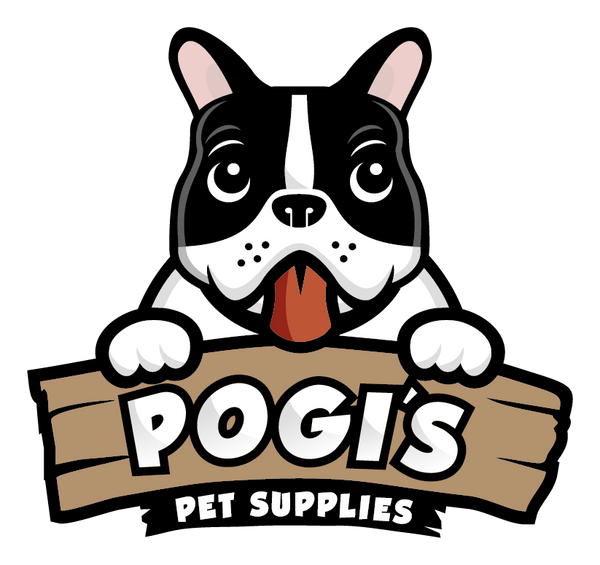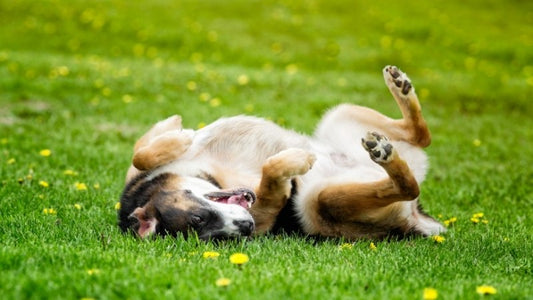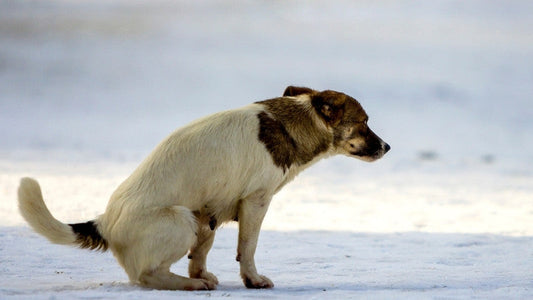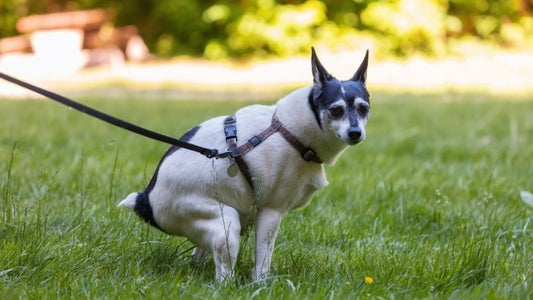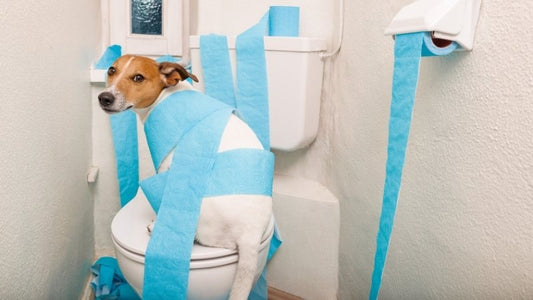You brush your pup, pile up the fur, and the next morning it looks like your living room sprouted a brand-new carpet. No matter how often you sweep or vacuum, the fluff seems to multiply faster than your dog can wag their tail. Sound familiar? That might be because your pup is rocking more than just one coat.
Some dogs are basically dressed in layers, with a built-in wardrobe of two coats instead of one. This extra outfit doesn’t just make them look cuddly; it helps them handle cold weather, stay cool when the heat kicks in, and keep their skin in good shape. Owners often mistake it for “just more fur,” but it’s really nature’s way of giving them year-round protection.
Spotting a double coat isn’t always obvious, but it can save you from hairy situations at home. So, is your dog a double-dresser? Let’s find out.
What Is a Double Coat and Why Do Dogs Have It?

A double coat is exactly what it sounds like: two layers of fur built for two very different jobs. The first layer, the undercoat, is soft and dense, almost like a fluffy blanket. It traps warmth when the air is cold and helps hold cool air close to the skin once the weather heats up. That’s why your house feels like it’s snowing fur during shedding season; your dog is swapping out this layer as the seasons change.
On top of that sits the guard hairs, also called the topcoat. These hairs feel coarser and work more like armor. They keep out dirt, shed water, and even block the sun from reaching your dog’s skin. Breeds like golden retrievers and German shepherds depend on this tough layer for protection, whether they’re running through fields or splashing in puddles.
Most double coated dogs come from working or cold-weather backgrounds. Bernese mountain dogs, for example, need both layers to stay comfortable in freezing conditions. Compare that with single coated breeds, such as greyhounds, whose short, sleek fur offers less insulation but sheds far less.
How to Tell If Your Dog Has a Double Coat
1. The Hand Test
Gently run your fingers against the direction of your dog’s fur. As your hand moves through, pay attention to the layers. If you notice a soft, woolly cushion sitting beneath a layer of longer, coarser hairs, that’s the signature sign of a double coat. The top layer is the shield, while the fluffy undercoat acts like hidden insulation.
This test works best right after a bath or blow-dry, when the coat has fluffed up and each layer becomes easier to separate. You’ll often see the undercoat puff out, making the two textures more obvious.
2. Observation During Shedding Seasons
One of the easiest giveaways shows up when the seasons change. If you’ve ever felt like your dog is trying to redecorate the house with fur, you might be dealing with a double coat. These dogs don’t just shed lightly; they “blow” their coat in spring and fall, releasing thick clumps of hair all at once.
You’ll often notice tufts popping out around the thighs, neck, tail base, or even under the arms. Instead of a steady trickle of loose hair, it looks like patches of fluff are working their way out.
Owners usually discover fur balls in corners, on couches, and in places the dog hasn’t even touched, far more than the light dusting you’d see from single-coated breeds.
This seasonal shedding may look dramatic, but it’s a natural way for the undercoat to reset for changing temperatures.
3. Water Retention After Bathing
Bath time can reveal a lot about your dog’s coat type. Some pups give a good shake and are nearly dry, while others seem to carry half the tub with them. Double-coated dogs fall into the second group. Their soft undercoat holds onto water, making it harder to dry them fully, even when the coarse guard hairs on the top coat feel less damp.
If your dog has a double coat, you’ll often notice the fluffy undercoat clinging to moisture long after bath time. That lingering dampness can lead to severe matting if loose fur isn’t brushed out properly. Single-coated breeds, with only one layer of fur, usually dry much faster and don’t trap as much water close to the skin.
A good way to test is to run your fingers through the fur after a bath. If you feel that the soft undercoat is still wet while the outer coat seems dry, you’re likely dealing with two coats instead of one.
4. Groomer or Vet Assessment
Sometimes the easiest way to solve a mystery is to ask an expert. If you’re still unsure about your pup’s coat type, a groomer or veterinarian can confirm whether your dog has a double coat during a regular visit. These professionals handle a variety of breeds every day, so spotting two layers of fur is second nature to them.
During a grooming session, ask whether your dog’s coat would benefit from de-shedding techniques. Double-coated dog breeds often need special tools like an undercoat rake or dense brush to remove loose hair without damaging the guard hairs. A groomer can also give you tips on preventing mats, improving your grooming routine, and keeping your dog’s skin healthy.
Vets may not focus on grooming as much, but they’ll notice if a thick undercoat is contributing to overheating, severe matting, or skin irritation. Their advice can help you adjust seasonal care and choose the right grooming techniques.
Double Coat vs Single Coat: What’s the Difference?

1. Layer Structure
Double coated dogs have two layers: a soft undercoat and a set of coarse guard hairs on top. The undercoat provides insulation, keeping body temperature stable in both cold weather and warmer months. The guard hairs form a protective barrier, shielding the dog’s skin from dirt, water, and even UV rays.
Single coated dogs, on the other hand, have just the topcoat. Without the fluffy undercoat, their fur feels smoother or silkier to the touch. This coat type is easier to manage since it sheds less, but it doesn’t provide the same extra layer of protection or seasonal insulation.
2. Shedding Frequency & Type
Shedding is where the difference between coat types really shows. Most double-coated dogs shed in dramatic bursts, especially during spring and fall. This process, often called “blowing the coat,” happens when the soft undercoat loosens all at once.
Owners usually notice tufts of fur around the thighs, tail, and neck, along with fur balls piling up around the house. It may look overwhelming, but it’s a natural way for the undercoat to reset with the seasons.
Single-coated dogs, by comparison, shed at a lighter and more consistent pace. Instead of thick clumps of loose fur, their shedding feels more like a steady sprinkle throughout the year.
Because there’s no dense undercoat to replace, the cleanup is usually easier, and owners won’t face the same seasonal explosions of hair. That said, even single-coated breeds still benefit from regular brushing to keep their coat and skin healthy.
3. Grooming Needs
Caring for a double coat takes more commitment than most owners expect. Because double coated dogs carry both the soft undercoat and the protective topcoat, they need weekly brushing to remove loose hair and prevent mats from forming.
During heavy shedding season, tools like an undercoat rake or a dense brush help pull out the fluffy underlayer without breaking the coarse guard hairs. Skipping these steps can lead to severe matting, trapped dirt, or even irritation on the dog’s skin.
Single-coated breeds are easier to manage, but shouldn’t be overlooked. While they don’t require the same de-shedding techniques, they still benefit from brushing to distribute natural oils and keep the coat looking healthy. Gentle cleaning between grooming sessions is just as important, especially for pups that spend time outdoors.
Even without an insulating undercoat, a good grooming routine keeps the dog’s fur clean, shiny, and comfortable.
4. Heat Management & Protection
Double coats do more than keep dogs cozy in winter. The undercoat traps air close to the skin, while the topcoat blocks harsh sun and dirt. This two-layer system works in both directions: warmth in freezing weather and a cooling buffer when the summer sun kicks in.
That’s why shaving a double-coated dog can backfire, removing the very layer that helps balance body temperature.
Single-coated breeds don’t have that safety net. Their fur offers less insulation, which means they can overheat quickly or burn under direct sunlight. In hot climates, owners often use lightweight vests or dog-safe sunscreen to give single-coated pups the extra protection nature didn’t build in.
5. Visual Texture
A double coat usually has a fuller, almost plush look. The undercoat adds volume beneath the guard hairs, giving breeds like huskies and Australian shepherds their famously fluffy outline. This depth makes the fur look thicker and more layered, especially when the dog moves or shakes out loose hair.
Single-coated dogs present a very different picture. Their fur sits close to the body, appearing sleek and uniform without the extra layer. Boxers, poodles, and greyhounds are good examples of coats that look smooth and streamlined, with no hidden fluff beneath the surface.
|
Feature |
Double Coat |
Single Coat |
|---|---|---|
|
Layer Structure |
Two layers: soft undercoat + coarse guard hairs for extra protection |
One layer: only the topcoat, no insulating undercoat |
|
Shedding Pattern |
Seasonal “coat blowouts” with clumps of loose fur, especially in spring/fall |
Light, steady shedding year-round |
|
Grooming Needs |
Weekly brushing, de-shedding tools like undercoat rakes, prevent matting |
Basic brushing to spread natural oils, easier upkeep |
|
Heat & Cold Care |
Naturally insulates in both cold and hot weather; shaving disrupts balance |
More exposed to sun/heat; may need sunscreen or protective clothing |
|
Visual Texture |
Fluffy, voluminous appearance (e.g., Huskies, Aussies, Golden Retrievers) |
Sleek, close-to-skin look (e.g., Boxers, Poodles, Greyhounds) |
Common Double-Coated Dog Breeds

Double coats aren’t limited to one look, but many of the most recognizable examples come from spitz-type dogs. These breeds usually sport upright ears, thick fur, and curled tails, features designed for life in colder climates. Still, double coats appear across a wide variety of dogs, from sled pullers to family companions.
Here are a few breeds you’re likely to recognize:
-
Huskies – Known for their thickest coats and ability to thrive in extreme cold.
-
Golden Retrievers – Their long double coats keep them warm during outdoor activities.
-
German Shepherds – A working breed with dense fur that protects them while herding livestock or serving in demanding jobs.
-
Shiba Inus – Compact but fluffy, their coats provide insulation despite their smaller size.
-
Akitas – Bred for mountainous regions, their two coats are built for protection.
-
Newfoundlands – Dense fur helps them stay warm even in icy water.
-
Border Collies – Medium double coats give them stamina for long days of herding.
-
Australian Shepherds – A fluffy undercoat paired with a protective topcoat supports their active lifestyle.
-
Labrador Retrievers – Though their coats are short, they still carry both layers for extra protection.
Common Single-Coated Dog Breeds

Single coats may not have the layered protection of double coats, but they often mean easier grooming and less dramatic shedding. These breeds carry only one layer of fur, which usually feels smoother and lies closer to the skin.
Many single-coated dogs are also a better choice for allergy-sensitive households, since they produce less dander and shed in smaller amounts compared to most double-coated dogs.
Here are some familiar examples:
-
Poodles – Curly single coats that trap loose hair, often considered more allergy-friendly.
-
Boxers – Sleek, close-to-skin coats that require minimal upkeep.
-
Greyhounds – Smooth, thin fur that makes them sensitive to cold temperatures.
-
Boston Terriers – Short, polished coats with low maintenance needs.
-
Maltese – Long, silky single coats that need brushing but don’t have a fluffy underlayer.
-
Dachshunds – Sleek or wiry single coats that hug the body.
-
Chihuahuas – Whether short-haired or long-haired, both coat types are single-layered.
-
Yorkshire Terriers – Hair-like coats that resemble fine human hair rather than dense fur.
Why Identifying Coat Type Matters for Grooming?
Coat type shapes the way you care for your dog. A pup with a double coat needs very different grooming techniques than one with a single coat, and knowing the difference prevents a lot of trouble down the road.
Double-coated dogs rely on both the undercoat and the guard hairs to manage body temperature. Shaving removes that extra layer of protection, disrupts natural shedding cycles, and can even cause permanent changes in how the fur grows back.
These breeds do best with weekly brushing, de-shedding tools like an undercoat rake, and a steady grooming routine that removes loose hair while protecting the top coat.
Single-coated dogs may not require as much work, but they still benefit from care beyond basic brushing. Regular bathing, light trims, and gentle cleaning keep the coat sleek and the dog’s skin healthy. Eco-friendly options such as Pogi’s grooming wipes are useful for quick touch-ups, helping you keep your pup clean between full grooming sessions without stripping natural oils.
Keep Double Coats Clean the Easy Way
Double-coated dogs may be fluffy and lovable, but that extra layer of fur comes with extra responsibility. Brushing out loose hair, tackling shedding season, and keeping dirt from settling deep in the undercoat all take time. Without the right routine, it’s easy to make mistakes such as over-bathing or shaving, which can damage the coat and affect your dog’s comfort.
That’s where simple, safe tools make a difference. Pogi’s Plant-Based Dog Grooming Wipes are designed to glide through dense fur, lifting away dust, dander, and loose debris while protecting the natural oils in the coat. Made with gentle, eco-friendly ingredients, they’re safe for daily use on double-coated breeds and even work for cats.
Quick wipe-downs between grooming sessions keep your pup clean, your home fresher, and your brushing routine easier to manage.
